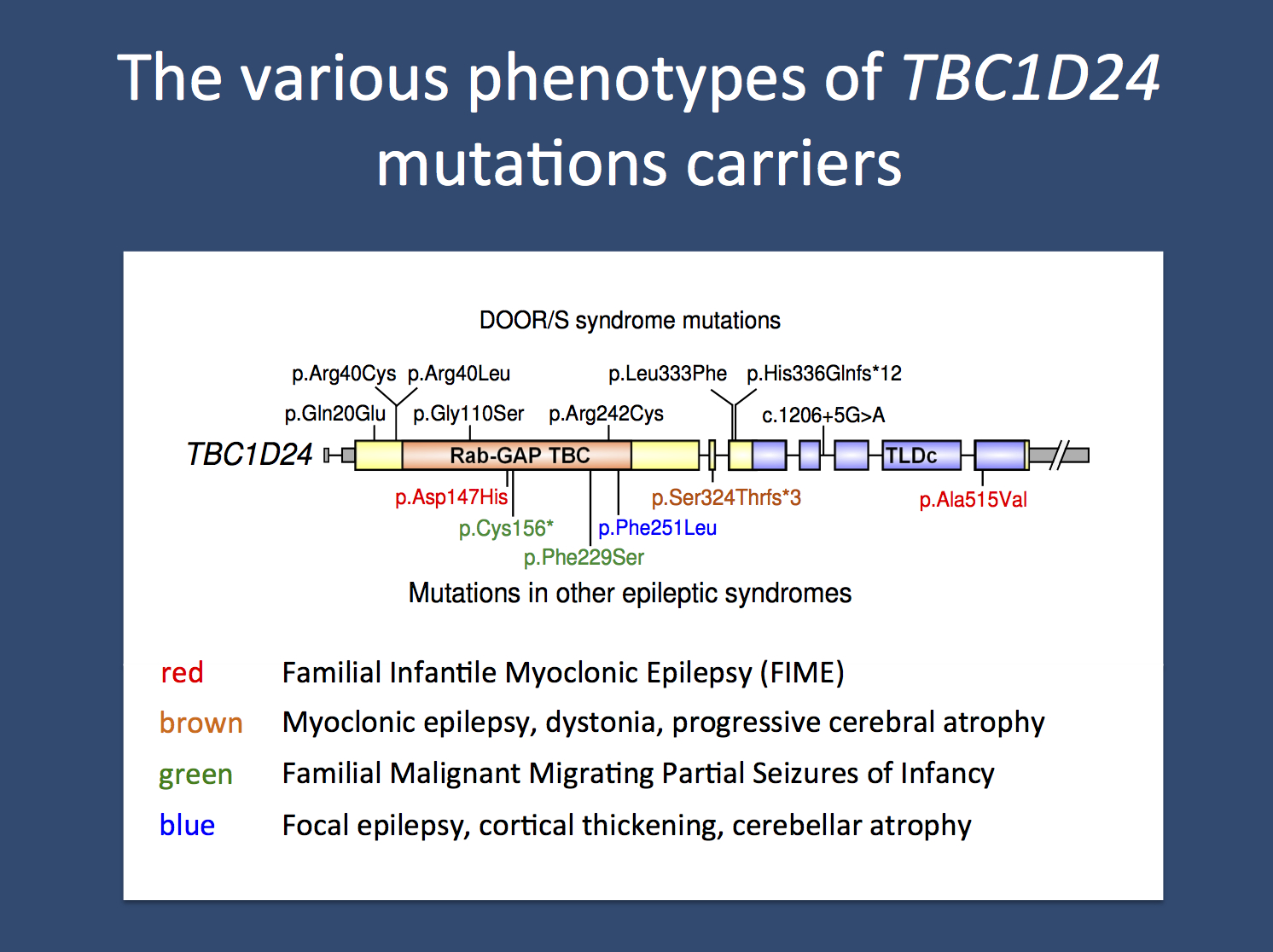TBC1D24. Yes, our last blog post regarding TBC1D24 was published in 2015, but that doesn’t mean we aren’t still thinking about this elusive gene and its wide phenotypic spectrum. Today we provide an update from Joeylynn – a new research coordinator in the Helbig lab, a health care provider, co-creator of the TBC1D24 Family Foundation, and most importantly, the mother of a child with TBC1D24

From our original post – the various recessive and compound heterozygous epilepsy phenotypes due to mutations in TBC1D24.
Family Foundation. In 2020, I helped create the TBC1D24 Family Foundation. Initially I was hesitant to commit to such an undertaking, for inherently pessimistic reasons. I have been in healthcare for decades and had been feeling jaded for a long time. However, after pivotal conversations in which I was encouraged to lead (“if not you, then who?”), my perspective started to shift and I took off my “dirt covered glasses” (that is, the opposite of rose-colored glasses). I started to see diseases with poor prognoses begging to receive funding and attention, and then clinical trials creating treatments that helped significantly. And of course, the natural response I had was, “What about us?!” And so it began. Now, we have we have an eight member board, consisting of physicians and parents and have had a number of successful initiatives.
Research Funding. There are different research efforts occurring globally, but our TBC1D24 Foundation has funded a major effort through the Orphan Disease Center and their “Million Dollar Bike Ride”. This program offers a grant match program and subsequently matches your foundation with interested and qualified research scientists. In 2022, we raised $103k which we awarded to Dr. Anna Fassio. Her research activity deals with synaptic physiology and aims to understand the molecular mechanisms of neurotransmitter release and synaptic vesicle trafficking. She is focusing particularly on the pathophysiology of neurological and psychiatric diseases associated with mutations in synaptic genes using in vitro and in vivo models. Synapsins, TBC1D24, and members of the vaculoar-ATPase complex are the gene products currently under investigation.
AHC. As parents, we had seen this unusual symptom of alternating hemiplegia of childhood (AHC) in our kids with TBC1D24, but there was no definitive proof – just suspicion. However, we have finally gotten documented evidence of this in the form of a recently published case review that describes a child with a TBC1D24 mutation that meets all of the criteria for a diagnosis of AHC. Thus, we can now say that TBC1D24 should be considered in the diagnostic workup of a person with AHC.
Diagnosis. Rare Diseases often have a delay in diagnosis for the obvious reasons. They’re rare. Although the prevalence of TBC1D24 disorders is unknown, they are now likely in the hundreds, including undiagnosed cases. TBC1D24 can be diagnosed from an epilepsy panel, or from whole exome sequencing. It is still true that there have been no de novo variants reported, and so this remains an autosomal recessive disorder, with the exception of Autosomal Dominant DFNB86– Non Syndromic Deafness.
New features. There are some other traits unique to this disorder that we haven’t seen in many other genetic epilepsies such as, but not limited to, paroxysmal eye-head movements (as seen in GLUT1 deficiency), a very distinct tonic abdominal crunch with associated a scream and brief eye deviation, facial myoclonus, focal seizures lasting days, sudden loss of tone with appropriate awareness, and the fact that many, if not all of these things can be temporarily extinguished with sleep.
The Future. We are going to keep fundraising and advocating. We are primed and ready to ride for our second year in the 2023 Million Dollar Bike Ride with a team of about 50 cyclists and thousands of dollars raised. Research efforts are likely to continue across the globe. Here in Philadelphia, as we inch closer and closer to drug repurposing, and thoughts of gene therapy for genetic epilepsies, I can’t help but feel optimistic that any success our friends have, may just trickle on down to our “beloved” TBC1D24 gene.
What you need to know. TBC1D24 is a rare autosomal recessive neurological disorder that is expected to affect hundreds of children globally. The Family Foundation is working to raise awareness and funding, with the hopes of support clinical trials and creation of new treatments. While there is still much research to be done, with exciting studies in the works, research has highlighted several primary features, such as epilepsy and intellectual disability, as well as unique features, such as AHC, paroxysmal eye-head movements, tonic abdominal crunch, facial myoclonus, focal status epilepticus lasting several days, and sudden loss of tone with intact awareness.

